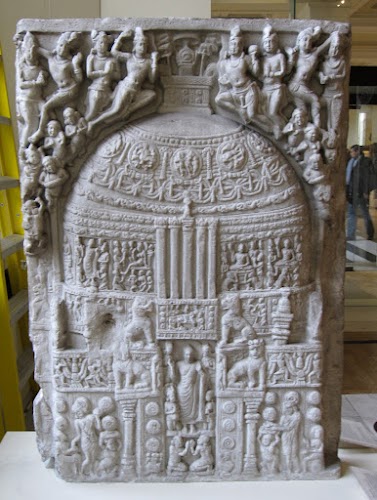
Mahachaitya
Guntur, India
- Admire intricate carvings
- Explore ancient stupa ruins
- Learn Buddhist history
- Photography of the site
- Visit nearby museums
Known for:
Description:
The Mahachaitya, located in Guntur, India, is a significant Buddhist stupa and a major historical site. It showcases intricate carvings and a rich history that dates back centuries. The site offers a glimpse into the region's Buddhist past and is a serene place for reflection. The architecture is impressive, with its dome-shaped structure and detailed sculptures depicting scenes from Buddhist lore. Visitors can explore the surrounding area, which often includes other smaller stupas and ruins, providing a comprehensive view of the ancient site. It's a must-visit for history enthusiasts and those interested in Buddhist culture.
History:
The Mahachaitya, also known as the Great Stupa of Amaravati, is believed to have been constructed during the Satavahana dynasty, with its earliest phase dating back to the 3rd century BCE. It was a major center of Buddhist learning and practice. Over the centuries, the stupa underwent several expansions and renovations, reflecting the changing architectural styles. The site was abandoned for a period, leading to its deterioration. However, archaeological excavations in the 19th and 20th centuries unearthed its remnants, revealing its historical and artistic importance. The findings, including numerous sculptures and inscriptions, are now displayed in museums, providing valuable insights into the region's past and Buddhist heritage.